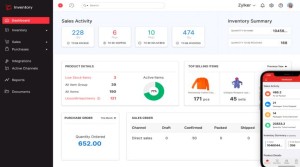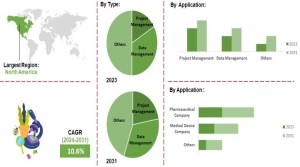What are the Benefits of Integrating AI in Curriculum?
Using AI in schools can be really helpful. It can make learning more fun and fit each student's needs.

Smart computers are changing how we do things in many ways, and learning is one of them. Integrating AI into the curriculum offers numerous benefits that can enhance teaching and learning experiences. This overview explores the advantages of incorporating AI in educational programs and the broader implications for students, educators, and the education system.
Benefits of Integrating AI in Education
AI Gives Personalized Learning Experience
One of the most significant benefits of integrating AI into the curriculum is the ability to provide personalized learning experiences. AI systems can analyze student data, including learning styles, strengths, and improvement areas.
By doing so, AI can tailor educational content to meet each student's unique needs. This special way of teaching lets students learn at their own speed. No one is left behind, and smart students are always given harder work.
Enhanced Teaching Tools
AI can be an invaluable tool for educators to enhance teaching methods. Smart computers can do things like checking attendance and marking tests for teachers. This gives teachers more time to teach and talk to their students. Moreover, AI can offer insights into student performance and engagement, helping teachers identify and address learning gaps more effectively.
Access to Quality Education
AI can bridge the gap in education quality across different regions. Through AI-powered platforms, students in remote or underserved areas can access high-quality educational resources and personalized tutoring. This means that everyone, no matter where they live, has a fair chance to learn and be successful in school.
Improved Student Engagement
Interactive AI applications, such as virtual tutors and educational games, can significantly boost student engagement. These tools make learning fun and exciting. They help students get more involved in their studies. Increased engagement typically leads to better retention of information and improved academic performance.
Development of Essential Skills
Teaching students about AI also helps them get ready for jobs in the future. As AI continues permeating various industries, a foundational understanding of AI technologies becomes crucial. By learning about AI, students develop critical thinking, problem-solving, and technical skills that are highly valued in the job market.
Ethical and Societal Awareness
Teaching AI in schools goes beyond technical skills. It also includes discussions on its ethical implications and societal impact. Students learn to think critically about issues such as data privacy, algorithmic bias, and the role of AI in society. This awareness is essential for fostering responsible and ethical use of technology in the future.
Challenges and Considerations
Using AI in schools has many good points, but there are also problems. It's important that everyone has a chance to use AI tools, because if some kids can use them and others can't, it will make the gap between rich and poor students even bigger. Also, teachers needs to learn how to use AI in their classes. They need to know how to use AI tools well to help their students learn.
We will talk about the good things that happen when we use AI in schools. We'll look at how to put AI into what students learn, how AI can help teachers, and what good things AI can do for education.
Role of AI in Curriculum
Integrating AI into the curriculum involves embedding AI related content and tools into educational programs. This can range from teaching basic AI concepts and programming to using AI-Powered tools for learning and administration. Including AI in the curriculum prepares students for a future where AI will play a significant role in various industries. It also helps them learn to think deeply, solve problems, and use technology, which is essential for getting jobs today.
AI Enhancing the Education
AI in education extends beyond teaching AI as a subject. It encompasses the use of AI technologies to enhance the overall educational experience. AI can personalize learning experiences by adapting to individual student needs, providing customized feedback, and identifying areas where students may need additional support. Smart tools can do boring paperwork for teachers, giving teachers more time to teach and talk to students.
Other Benefits of Artificial Intelligence in Education
1. Personalized Learning
AI enables the creation of customized learning experiences by analyzing data on student performance and learning styles. It can recommend resources, adjust difficulty levels, and provide tailored feedback, ensuring that each student can learn at their own pace and in their way.
2. Enhanced Interaction With Users
Interactive AI tools such as chat bots, virtual tutors, and immersive learning environments can make learning more engaging and interactive. These tools can provide instant support, answer questions, and offer explanations in a way that keeps students engaged.
3. Efficient Administration
AI can automate routine administrative tasks such as grading, scheduling, and tracking student progress. This saves educators time, reduces the likelihood of errors, and ensures that administrative processes run smoothly.
4. Data Driven Insights
AI can look at lots of information about students and their learning to figure out how well they are doing if the lessons are working and what can be improved. This helps teachers make good choices to help students learn better.
5. Access to Education
AI-Powered platforms can provide access to quality education for students in remote or underserved areas. Online courses, virtual classrooms, and AI tutors can bridge the gap between students and quality educational resources, ensuring equitable access to education.
6. Skill Development
Integrating AI into the curriculum helps students develop essential skills such as coding, data analysis, and problem-solving. These skills are increasingly important in a world where AI and technology are ubiquitous.
Most importantly, the synergy between AI and education creates opportunities for a more dynamic, efficient, and inclusive learning environment. AI can support teachers in delivering high-quality education, provide students with personalized learning experiences, and create a more efficient educational system. Also, AI is improving, leading to new and exciting ways to teach and learn.
Using AI in schools can be really helpful. It can make learning more fun and fit each student's needs, and it can give teachers new tools to help students. Plus, it can teach kids important skills for the future. But it's important to make sure everyone has a chance to use AI and that teachers know how to use it well. As AI keeps getting better, it will be very important for getting kids ready for a world where AI is everywhere.
Also read the following related posts.

Smart computers are changing how we do things in many ways, and learning is one of them. Integrating AI into the curriculum offers numerous benefits that can enhance teaching and learning experiences. This overview explores the advantages of incorporating AI in educational programs and the broader implications for students, educators, and the education system.
Benefits of Integrating AI in Education
AI Gives Personalized Learning Experience
One of the most significant benefits of integrating AI into the curriculum is the ability to provide personalized learning experiences. AI systems can analyze student data, including learning styles, strengths, and improvement areas.
By doing so, AI can tailor educational content to meet each student's unique needs. This special way of teaching lets students learn at their own speed. No one is left behind, and smart students are always given harder work.
Enhanced Teaching Tools
AI can be an invaluable tool for educators to enhance teaching methods. Smart computers can do things like checking attendance and marking tests for teachers. This gives teachers more time to teach and talk to their students. Moreover, AI can offer insights into student performance and engagement, helping teachers identify and address learning gaps more effectively.
Access to Quality Education
AI can bridge the gap in education quality across different regions. Through AI-powered platforms, students in remote or underserved areas can access high-quality educational resources and personalized tutoring. This means that everyone, no matter where they live, has a fair chance to learn and be successful in school.
Improved Student Engagement
Interactive AI applications, such as virtual tutors and educational games, can significantly boost student engagement. These tools make learning fun and exciting. They help students get more involved in their studies. Increased engagement typically leads to better retention of information and improved academic performance.
Development of Essential Skills
Teaching students about AI also helps them get ready for jobs in the future. As AI continues permeating various industries, a foundational understanding of AI technologies becomes crucial. By learning about AI, students develop critical thinking, problem-solving, and technical skills that are highly valued in the job market.
Ethical and Societal Awareness
Teaching AI in schools goes beyond technical skills. It also includes discussions on its ethical implications and societal impact. Students learn to think critically about issues such as data privacy, algorithmic bias, and the role of AI in society. This awareness is essential for fostering responsible and ethical use of technology in the future.
Challenges and Considerations
Using AI in schools has many good points, but there are also problems. It's important that everyone has a chance to use AI tools, because if some kids can use them and others can't, it will make the gap between rich and poor students even bigger. Also, teachers needs to learn how to use AI in their classes. They need to know how to use AI tools well to help their students learn.
We will talk about the good things that happen when we use AI in schools. We'll look at how to put AI into what students learn, how AI can help teachers, and what good things AI can do for education.
Role of AI in Curriculum
Integrating AI into the curriculum involves embedding AI related content and tools into educational programs. This can range from teaching basic AI concepts and programming to using AI-Powered tools for learning and administration. Including AI in the curriculum prepares students for a future where AI will play a significant role in various industries. It also helps them learn to think deeply, solve problems, and use technology, which is essential for getting jobs today.
AI Enhancing the Education
AI in education extends beyond teaching AI as a subject. It encompasses the use of AI technologies to enhance the overall educational experience. AI can personalize learning experiences by adapting to individual student needs, providing customized feedback, and identifying areas where students may need additional support. Smart tools can do boring paperwork for teachers, giving teachers more time to teach and talk to students.
Other Benefits of Artificial Intelligence in Education
1. Personalized Learning
AI enables the creation of customized learning experiences by analyzing data on student performance and learning styles. It can recommend resources, adjust difficulty levels, and provide tailored feedback, ensuring that each student can learn at their own pace and in their way.
2. Enhanced Interaction With Users
Interactive AI tools such as chat bots, virtual tutors, and immersive learning environments can make learning more engaging and interactive. These tools can provide instant support, answer questions, and offer explanations in a way that keeps students engaged.
3. Efficient Administration
AI can automate routine administrative tasks such as grading, scheduling, and tracking student progress. This saves educators time, reduces the likelihood of errors, and ensures that administrative processes run smoothly.
4. Data Driven Insights
AI can look at lots of information about students and their learning to figure out how well they are doing if the lessons are working and what can be improved. This helps teachers make good choices to help students learn better.
5. Access to Education
AI-Powered platforms can provide access to quality education for students in remote or underserved areas. Online courses, virtual classrooms, and AI tutors can bridge the gap between students and quality educational resources, ensuring equitable access to education.
6. Skill Development
Integrating AI into the curriculum helps students develop essential skills such as coding, data analysis, and problem-solving. These skills are increasingly important in a world where AI and technology are ubiquitous.
Most importantly, the synergy between AI and education creates opportunities for a more dynamic, efficient, and inclusive learning environment. AI can support teachers in delivering high-quality education, provide students with personalized learning experiences, and create a more efficient educational system. Also, AI is improving, leading to new and exciting ways to teach and learn.
Using AI in schools can be really helpful. It can make learning more fun and fit each student's needs, and it can give teachers new tools to help students. Plus, it can teach kids important skills for the future. But it's important to make sure everyone has a chance to use AI and that teachers know how to use it well. As AI keeps getting better, it will be very important for getting kids ready for a world where AI is everywhere.
Also read the following related posts.
Conversation
Latest Blogs
© Blog CoolCalculator, Explore CoolCalculator, your destination for the latest insights, tips, and updates on the world of online calculators. Stay informed and make your calculations smarter with our blog. ,
Designed
by Saad Media Team , Team Lead M.Rizwan Akhtar












